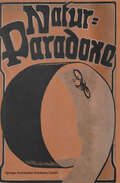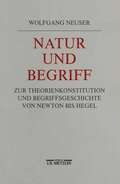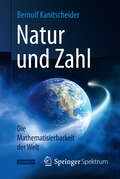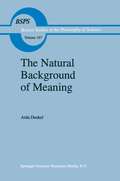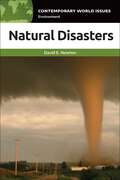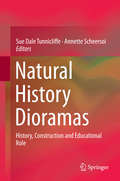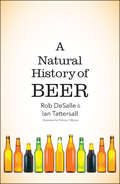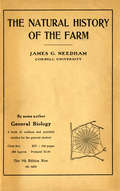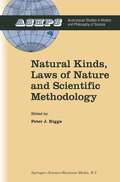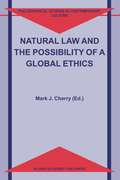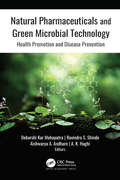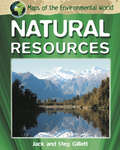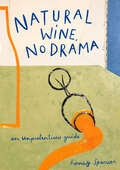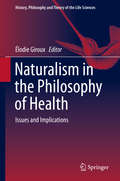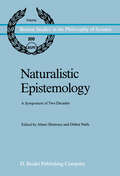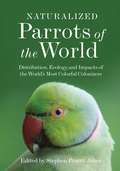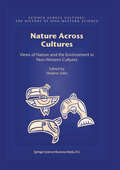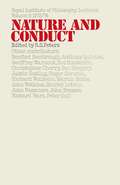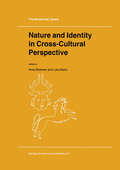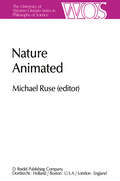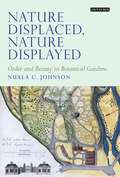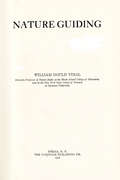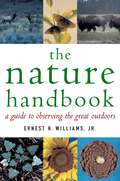- Table View
- List View
Natur-Paradoxe: Ein Buch für die Jugend zur Erklärung von Erscheinungen, die mit der täglichen Erfahrung im Widerspruch zu stehen scheinen
by C. SchäfferDieser Buchtitel ist Teil des Digitalisierungsprojekts Springer Book Archives mit Publikationen, die seit den Anfängen des Verlags von 1842 erschienen sind. Der Verlag stellt mit diesem Archiv Quellen für die historische wie auch die disziplingeschichtliche Forschung zur Verfügung, die jeweils im historischen Kontext betrachtet werden müssen. Dieser Titel erschien in der Zeit vor 1945 und wird daher in seiner zeittypischen politisch-ideologischen Ausrichtung vom Verlag nicht beworben.
Natur und Begriff: Studien zur Theoriekonstitution und Begriffsgeschichte von Newton bis Hegel
by Wolfgang NeuserVor dem Hintergrund einer Theorie einer Begriffsgeschichte naturwissenschaftlicher Begriffe stellt Wolfgang Neuser in diesem Buch historische Fallbeispiele vom 17. bis zum 19. Jahrhundert gleichsam als empirisches Material einer philosophischen Untersuchung vor.
Natur und Zahl: Die Mathematisierbarkeit der Welt
by Bernulf KanitscheiderDie Mathematik hat sich seit dem Entstehen der modernen Naturwissenschaft im 16. Jh. als das entscheidende Erkenntnisinstrument erwiesen, so dass die Mathematisierung der Theorien eines Faches als Kriterium seiner Reife betrachtet wurde. Dennoch ist der Grund für diesen unerwarteten Anwendungserfolg immer dunkel geblieben. Warum lässt sich die materielle Natur mit dem geistigen Werkzeug der Zahlen und geometrischen Formen so perfekt erfassen? Diese Frage ist eng verknüpft mit dem ontologischen Status abstrakter Objekte: Wo sind sie beheimatet, in den Dingen als Strukturen, im Hintergrund als Ideen, oder sind sie nur Fiktionen? Die Hypothese dieses Buches folgt einer Idee von P.A.M. Dirac, der vermutete, dass die Natur eine innere mathematische Qualität besitzt.
The Natural Background of Meaning (Boston Studies in the Philosophy and History of Science #197)
by A. DenkelIn The Natural Background to Meaning Denkel argues that meaning in language is an outcome of the evolutionary development of forms of animal communication, and explains this process by naturalising the Locke-Grice approach. The roots of meaning are contained in observable regularities, which are manifestations of objective connections such as essences and causal relations. Denkel's particularistic ontology of properties and causation leads to a view of time that harmonises B-theory with transience. Time's passage, he argues, is a necessary condition of communication and meaning. The book connects some central topics in the philosophies of language, science and ontology, treating them within the framework of a single theory. It will interest not only professional philosophers doing research on meaning, universals, causation and time, but also students, who can consult it as a textbook examining Grice's theory of meaning.
Natural Disasters: A Reference Handbook (Contemporary World Issues)
by David E. NewtonThis book provides a detailed introduction to natural disasters and the ways in which they have had and continue to have, profound effects on human society.Natural Disasters: A Reference Handbook surveys the impact of these events on human civilization. The opening chapter provides a general history and background of the major types of natural disasters, including earthquakes, volcanic eruptions, severe storms, and forest fires. The information presented in this introduction allows the reader to better understand current issues, problems, and solutions related to natural disasters discussed in subsequent chapters.The book covers the role of natural disasters in human life from earliest recorded history (and, to some extent, even earlier) to the present day. It provides an extensive variety of resources that encourage readers to learn more about the topics discussed. The book is intended for readers in the late middle school to high school age range, as well as adults who may have a special interest in the subject.
Natural Disasters: A Reference Handbook (Contemporary World Issues)
by David E. NewtonThis book provides a detailed introduction to natural disasters and the ways in which they have had and continue to have, profound effects on human society.Natural Disasters: A Reference Handbook surveys the impact of these events on human civilization. The opening chapter provides a general history and background of the major types of natural disasters, including earthquakes, volcanic eruptions, severe storms, and forest fires. The information presented in this introduction allows the reader to better understand current issues, problems, and solutions related to natural disasters discussed in subsequent chapters.The book covers the role of natural disasters in human life from earliest recorded history (and, to some extent, even earlier) to the present day. It provides an extensive variety of resources that encourage readers to learn more about the topics discussed. The book is intended for readers in the late middle school to high school age range, as well as adults who may have a special interest in the subject.
Natural History Dioramas: History, Construction and Educational Role
by Sue Dale Tunnicliffe Annette ScheersoiThis book brings together in a unique perspective aspects of natural history dioramas, their history, construction and rationale, interpretation and educational importance, from a number of different countries, from the west coast of the USA, across Europe to China. It describes the journey of dioramas from their inception through development to visions of their future. A complementary journey is that of visitors and their individual sense making and construction of their understanding from their own starting points, often interacting with others (e.g. teachers, peers, parents) as well as media (e.g. labels). Dioramas have been, hitherto, a rather neglected area of museum exhibits but a renaissance is beginning for them and their educational importance in contributing to people’s understanding of the natural world. This volume showcases how dioramas can reach a wide audience and increase access to biological knowledge.
A Natural History of Beer
by Rob DeSalle Ian TattersallA celebration of beer—its science, its history, and its impact on human culture What can beer teach us about biology, history, and the natural world? From ancient Mesopotamian fermentation practices to the resurgent American craft brewery, Rob DeSalle and Ian Tattersall peruse the historical record and traverse the globe for engaging and often surprising stories about beer. They explain how we came to drink beer, what ingredients combine to give beers their distinctive flavors, how beer’s chemistry works at the molecular level, and how various societies have regulated the production and consumption of beer. Drawing from such diverse subject areas as animal behavior, ecology, history, archaeology, chemistry, sociology, law, genetics, physiology, neurobiology, and more, DeSalle and Tattersall entertain and inform with their engaging stories of beer throughout human history and the science behind it all. Readers are invited to grab a beer and explore the fascinating history of its creation.
Natural History of the Farm: A Guide to the Practical Study of the Sources of Our Living in Wild Nature
by James G. NeedhamThis is a guide to the practical study of the sources in wild nature of our living. It contains a series of study outlines for the entire year, and deals with both the plants and animals of the farm-the things that men have chosen to deal with as a means of livelihood and of personal satisfaction in all ages.
Natural Kinds, Laws of Nature and Scientific Methodology (Studies in History and Philosophy of Science #12)
by Peter J. RiggsAustralia and New Zealand boast an active community of scholars working in the field of history, philosophy and social studies of science. 'Australasian Studies in History and Philosophy of Science' aims to provide a distinctive publication outlet for their work. Each volume comprises a group of essays on a connected theme, edited by an Australian or a New Zealander with special expertise in that particular area. In each volume, a majority of the contributors is from Australia or New Zealand. CQntributions from elsewhere are by no means ruled out, however, and are indeed actively encouraged wherever appropriate to the balance of the volume in question. Earlier volumes in the series have been welcomed for significantly advancing the discussion of the topics they have dealt with. The present volume will I believe be greeted equally enthusiastically by readers in many parts of the world. R. W. Home General Editor Australasian Studies in History and Philosophy of Science Vll ACKNOWLEDGEMENTS The stimulus to assemble this collection of essays grew from a number of interesting seminars conducted during the academic years 1991-92, under the auspices of the Victorian Centre for the History and Philosophy of Science (which is centred at the Bundoora campus of La Trobe University in the outer suburbs of Melbourne). Some of the seminar presentations to the Victorian Centre for HPS and other articles awaiting pUblication have been made available as part of the Pre-print Series of the Victorian Centre.
Natural Law and the Possibility of a Global Ethics (Philosophical Studies in Contemporary Culture #11)
by Mark J. CherryAccounts of natural law moral philosophy and theology sought principles and precepts for morality, law, and other forms of social authority, whose prescriptive force was not dependent for validity on human decision, social influence, past tradition, or cultural convention, but through natural reason itself. This volume critically explores and assesses our contemporary culture wars in terms of: the possibility of natural law moral philosophy and theology to provide a unique, content-full, canonical morality; the character and nature of moral pluralism; the limits of justifiable national and international policy seeking to produce and preserve human happiness, social justice, and the common good; the ways in which morality, moral epistemology, and social political reform must be set within the broader context of an appropriately philosophically and theologically anchored anthropology. This work will be of interest to philosophers, theologians, bioethicists, ethicists and political scientists.
Natural Pharmaceuticals and Green Microbial Technology: Health Promotion and Disease Prevention
by Debarshi Kar Mahapatra Ravindra S. Shinde Aishwarya A. Andhare A. K. HaghiThis volume presents some of the latest research and applications in using natural substances and processes for pharmaceutical products. It presents an in-depth examination of the chemical and biological properties of selected natural products that are either currently used or have the potential for useful applications in the chemical and pharmaceutical industries. It covers emerging technologies and case studies and is a source of up-to-date information on the topical subject of natural products and microbial technology. It provides an applied overview of the field, from traditional medicinal targets to cutting-edge molecular techniques. Natural products have always been of key importance to drug discovery, but as modern techniques and technologies have allowed researchers to identify, isolate, extract, and synthesize their active compounds in new ways, they are once again coming to the forefront of drug discovery.
Natural Resources: Natural Resources Library Ebook (Maps of the Environmental World #2)
by Jack Gillett Meg GillettEach title in the series addresses an environmental topic and illustrated its aspects with the help of maps. An introductory spread presents the topic and explains key ideas, concepts and vocabulary. Twelve spreads each introduce an area of the world, including a map locating relevant sites, graphs offering comparative data and photography.A spread at the back of the book provides further study and comparison exercises.
Natural Wine, No Drama: An Unpretentious Guide
by Honey SpencerDiscover the world of natural wine… without all the drama. Honey Spencer is determined to help everyone understand and enjoy all that each unique glass has to offer.
Naturalism in the Philosophy of Health: Issues and Implications (History, Philosophy and Theory of the Life Sciences)
by Élodie GirouxIn a series of papers published in the 1970s, Christopher Boorse proposed a naturalist theory of health, mainly based on a value-free concept of ‘biological function’, a concept of ‘reference class’ and the notion of ‘statistical normality’. His theory has profoundly shaped the philosophical debates on the concepts of health and disease. It could even be said that the numerous criticisms of his 'biostatistical theory' are at the centre of what is usually referred to as the debate between ‘normativists’ and ‘naturalists’. Today, the predominant naturalist theory of health is still Boorse’s biostatistical theory. This volume offers the first comprehensive review and critical assessment of the nature and status of naturalism in the philosophy of health. It explores the notion of biological normativity and its relevance for the philosophy of health, and it analyses the implications of the philosophical theories of health for healthcare and the debate on health enhancement. In the first section, several contributions identify the kind of ‘naturalism’ the biostatistical theory belongs to and offer further criticisms or possible modifications, such as the concept of function that is required by this theory, and whether a comparativist approach to health is more relevant than a non-comparativist one. The second section explores natural or biological ‘normativity’ and some possible accounts of health that could be based on this concept. The third and final section focuses on the implications of naturalism in healthcare. 'Goals of Medicine’ is the first paper in which Christopher Boorse ventured toward analysing the implication of his biostatistical theory of health on the practice of medicine, the difficult issue of the goals of medicine and the boundary between treating and enhancing. Other papers in this section critically evaluate Boorse’s account and analyse the importance of a positive concept of health.
Naturalistic Epistemology: A Symposium of Two Decades (Boston Studies in the Philosophy and History of Science #100)
by Abner Shimony and Debra Nails1. AIMS OF THE INTRODUCTION The systematic assessment of claims to knowledge is the central task of epistemology. According to naturalistic epistemologists, this task cannot be well performed unless proper attention is paid to the place of the knowing subject in nature. All philosophers who can appropriately be called 'naturalistic epistemologists' subscribe to two theses: (a) human beings, including their cognitive faculties, are entities in nature, inter acting with other entities studied by the natural sciences; and (b) the results of natural scientific investigations of human beings, particularly of biology and empirical psychology, are relevant and probably crucial to the epistemological enterprise. Naturalistic epistemologists differ in their explications of theses (a) and (b) and also in their conceptions of the proper admixture of other components needed for an adequate treatment of human knowledg- e.g., linguistic analysis, logic, decision theory, and theory of value. Those contributors to this volume who consider themselves to be naturalistic epistemologists (the majority) differ greatly in these respects. It is not my intention in this introduction to give a taxonomy of naturalistic epistemologies. I intend only to provide an overview which will stimulate a critical reading of the articles in the body of this volume, by facilitating a recognition of the authors' assumptions, emphases, and omissions.
Naturalized Parrots of the World: Distribution, Ecology, and Impacts of the World's Most Colorful Colonizers
by Stephen Pruett-JonesA remarkable exploration of naturalized parrots, among the most widely distributed birds in the worldThere are more than 350 species of parrots in the world, and approximately 300 of these species have been transported to other countries through the caged pet trade. Whether through escaped captivity or purposeful release, many of these parrots are now breeding in new habitats. Indeed, no less than 75 species of parrots have established breeding populations in countries where they were introduced, and parrots are now among the most widely distributed group of birds. Naturalized Parrots of the World is the first book to examine this specific avian population.Bringing together the work of leading researchers in one convenient volume, this book explores the biology of naturalized parrots and their interactions with native ecosystems. Experts discuss the global distribution of parrots, their genetics, conservation implications, and human responses to these birds. They also consider debates surrounding management issues and the lack of consensus around nonnative species in the wild. Later chapters feature case studies of the two most successful species—the Rose-ringed Parakeet and Monk Parakeet—as well as studies of the introduced parrot species located in specific countries and regions, including the United States, United Kingdom, Spain, Portugal, northern Europe, South Africa, and Australia.Highlighting critical aspects of conservation biology and biodiversity, Naturalized Parrots of the World will be an invaluable resource for parrot owners, ornithologists, conservation biologists, and birdwatchers.
Naturalized Parrots of the World: Distribution, Ecology, and Impacts of the World's Most Colorful Colonizers
by Stephen Pruett-JonesA remarkable exploration of naturalized parrots, among the most widely distributed birds in the worldThere are more than 350 species of parrots in the world, and approximately 300 of these species have been transported to other countries through the caged pet trade. Whether through escaped captivity or purposeful release, many of these parrots are now breeding in new habitats. Indeed, no less than 75 species of parrots have established breeding populations in countries where they were introduced, and parrots are now among the most widely distributed group of birds. Naturalized Parrots of the World is the first book to examine this specific avian population.Bringing together the work of leading researchers in one convenient volume, this book explores the biology of naturalized parrots and their interactions with native ecosystems. Experts discuss the global distribution of parrots, their genetics, conservation implications, and human responses to these birds. They also consider debates surrounding management issues and the lack of consensus around nonnative species in the wild. Later chapters feature case studies of the two most successful species—the Rose-ringed Parakeet and Monk Parakeet—as well as studies of the introduced parrot species located in specific countries and regions, including the United States, United Kingdom, Spain, Portugal, northern Europe, South Africa, and Australia.Highlighting critical aspects of conservation biology and biodiversity, Naturalized Parrots of the World will be an invaluable resource for parrot owners, ornithologists, conservation biologists, and birdwatchers.
Nature Across Cultures: Views of Nature and the Environment in Non-Western Cultures (Science Across Cultures: The History of Non-Western Science #4)
by HelaineSelinNature Across Cultures: Views of Nature and the Environment in Non-Western Cultures consists of about 25 essays dealing with the environmental knowledge and beliefs of cultures outside of the United States and Europe. In addition to articles surveying Islamic, Chinese, Native American, Aboriginal Australian, Indian, Thai, and Andean views of nature and the environment, among others, the book includes essays on Environmentalism and Images of the Other, Traditional Ecological Knowledge, Worldviews and Ecology, Rethinking the Western/non-Western Divide, and Landscape, Nature, and Culture. The essays address the connections between nature and culture and relate the environmental practices to the cultures which produced them. Each essay contains an extensive bibliography. Because the geographic range is global, the book fills a gap in both environmental history and in cultural studies. It should find a place on the bookshelves of advanced undergraduate students, graduate students, and scholars, as well as in libraries serving those groups.
Nature and Identity in Cross-Cultural Perspective (GeoJournal Library #48)
by Anne Buttimer Luke WallinNature and Identity in Cross-Cultural Perspective presents 20 essays which explore diverse cultural interpretations of the earth's surface. Contrasted with each other and with the potentially cosmopolitan culture of science, these detailed studies of ways in which different cultures conceptualise nature appear in the context of global environmental change. Understanding across cultural lines has never been more important. This book shows how individual cultures see their own histories as offering protection for nature, while often viewing others as lacking such ethical restraints. Through such writing a discourse of understanding and common action becomes possible. The authors come from the places they discuss, and offer passionate as well as scholarly visions of nature within their cultural homes. Audience: This volume is of interest to academics and professionals working in the fields of cultural geography, environmental history, environmental studies, history of environmental ideas, environmental education, landscape and literature, nature and culture. It can be used for courses in the above-mentioned areas and seminars in comparative literature. It can also be used as a complimentary text to provide cultural context to literary readings, and for seminars on cultural aspects of the environment.
Nature Animated: Historical and Philosophical Case Studies in Greek Medicine, Nineteenth-Century and Recent Biology, Psychiatry, and Psychoanalysis/Papers Deriving from the Third International Conference on the History and Philosophy of Science, Montreal, Canada, 1980 Volume II (The Western Ontario Series in Philosophy of Science #21)
by MichaelRuseThese remarks preface two volumes consisting of the proceedings of the Third International Conference on the History and Philosophy of Science of the International Union of History and Philosophy of Science. The conference was held under the auspices of the Union, The Social Sciences and Humanities Research Council of Canada, and the Canadian Society for History and Philosophy of Science. The meetings took place in Montreal, Canada, 25-29 August 1980, with Concordia University as host institution. The program of the conference was arranged by a Joint Commission of the International Union of History and Philosophy of Science consisting of Robert E. Butts (Canada), John Murdoch (U. S. A. ), Vladimir Kirsanov (U. S. S. R. ), and Paul Weingartner (Austria). The Local Arrangements Committee consisted of Stanley G. French, Chair (Concordia), Michel Paradis, treasurer (McGill), Fran~ois Duchesneau (Universite de Montreal), Robert Nadeau (Universite du Quebec it Montreal), and William Shea (McGill University). Both committees are indebted to Dr. G. R. Paterson, then President of the Canadian Society for History and Philosophy of Science, who shared his expertise in many ways. Dr. French and his staff worked diligently and efficiently on behalf of all participants. The city of Montreal was, as always, the subtle mixture of extravagance, charm, warmth and excitement that retains her status as the jewel of Canadian cities. The funding of major international conferences is always a problem.
Nature Displaced, Nature Displayed: Order and Beauty in Botanical Gardens (Tauris Historical Geographical Series)
by Nuala C. JohnsonBotanical gardens brought together in a single space the great diversity of the earth's flora. They displaced nature from forest and foothill and re-arranged it to reveal something of the scientific principles underpinning the apparent chaos of the wild. Nature Displaced, Nature Displayed shows how the design and display of such gardens was not determined by scientific principles alone. Through a study of three botanical gardens - belonging to the University of Cambridge, the Royal Dublin Society, and the Belfast Natural History Society - the author shows how the final outcome involved a complex interplay of ideas about place, identity, empire, botanical science, and especially aesthetics, creating spaces that would educate the mind as well as please the senses. This highly engaging book offers a wealth of fresh insights into both the history and development of botanical gardens as well as connections between science and aesthetics. 'Nuala Johnson's masterful ethnography of three sites where the canons of science and aesthetics are refracted and blurred demonstrates why a geographical imagination matters. This is comparative history at its best.'James S. Duncan, University of Cambridge
Nature Guiding
by William Gould VinalNature Guiding is the science of inculcating nature enthusiasm, nature principles, and nature facts into the spirit of individuals. "Doing" nature-study means observing, wondering, and solving problems. It could include collecting, building, measuring, painting, planning, writing, touching, experimenting or any of a wide range of other activities. Most importantly, it allows children to be "original investigators."This book is intended as a resource for teachers and students engaged in nature study at summer camps and in schools. William Gould Vinal believed that the teacher of nature study should be "in sympathy with the simple life and the country way," that the nature study should emphasize observation of the interactions of plants and animals in their environment, and not be reduced to matters of taxonomy and anatomy. In Nature Guiding, he offers advice to camp counselors and school teachers on incorporating nature study into everyday activities, as well as suggestions for parents and others about using visits to state and national parks to teach nature lore.
The Nature Handbook: A Guide to Observing the Great Outdoors
by Ernest H. WilliamsNature is full of fascinating stories, stories that attract our attention at a young age and keep us amazed throughout our entire lives. The need to understand nature draws us back to its simple beauty again and again, yet underneath this simplicity lies a complex web of associations and patterns. The Nature Handbook does what no other field guide does: explores and explains nature through these connecting patterns, revealing them to the many different types of nature lovers. All naturalists-- from birders to gardeners, hikers to environmentalists, wildflower enthusiasts to butterfliers-- will appreciate the different approach of the Handbook, even those whose interest in the natural world is just beginning to develop. Naturalists who are already well versed in one group of organisms--birders, for example--will find new explanations and patterns for their favorite group, as well as new patterns all around them that they had previously overlooked. Observations in the Handbook are arranged in the three main sections of plants, animals, and habitats. These sections are then connected through discussions of the relationship of size and shape, adaptations, distribution patterns, behavior, and diversity of life. Since the emphasis is on patterns rather than individual species, each chapter has cross-references to related topics. For example, tree-related topics such as leaf shape, treelines, and fall colors, are all discussed in different chapters even though they are related. Leaf shape is associated with trees as organisms, and therefore is in Chapter 2: Trees; treelines are most associated with mountains, so their description is in Chapter 8: Mountains; fall colors apply more broadly to forests than to individual trees, and they are discussed in Chapter 9,Forests. Approximately 500 color photographs help make the more than 200 patterns apparent and recognizable for readers, and each pattern is accompanied by a detailed description and a brief list of sources. The book is designed to invite browsing, and readers will gain a rich ecological perspective and insight. Curiosity about the world around us is a basis for human learning; The Nature Handbook serves to aid all nature lovers in their quest for understanding the many stories that our living world provides.
